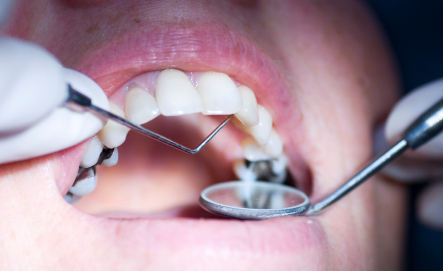Facts You Need to Know About Untreated Cavities
Posted on 4/1/2025 by Singing River Dentistry Madison |
 Cavities, also known as dental caries, are a common dental problem that can affect people of all ages. They are caused by a buildup of plaque, a sticky film that forms on your teeth when you eat or drink. This plaque contains bacteria that can produce acids that erode the enamel, the hard outer layer of your teeth. Cavities, also known as dental caries, are a common dental problem that can affect people of all ages. They are caused by a buildup of plaque, a sticky film that forms on your teeth when you eat or drink. This plaque contains bacteria that can produce acids that erode the enamel, the hard outer layer of your teeth.
When left untreated, cavities can lead to a number of problems, including:
| • |
Pain: As the cavity grows, it can reach the inner layer of your tooth, called the dentin. This layer contains nerves that can cause pain, especially when you eat or drink something hot, cold, or sweet. |
| • |
Infection: If the cavity is not treated, the bacteria can infect the pulp, the soft tissue inside the tooth. This can lead to an abscess, a painful collection of pus that can damage the surrounding bone. |
| • |
Tooth loss: If the cavity is not treated, the tooth can eventually break or fall out. |
Fortunately, cavities are preventable and treatable. With proper oral care, you can significantly reduce your risk of developing cavities.
How to Prevent Cavities
| • |
Brush your teeth twice a day with fluoride toothpaste. Fluoride strengthens the enamel and helps to prevent cavities. |
| • |
Floss daily. Flossing removes plaque and food particles from between your teeth, where your toothbrush can't reach. |
| • |
Eat a healthy diet. Limit sugary foods and drinks, as they promote the growth of bacteria that cause cavities. |
| • |
See your dentist for regular checkups and cleanings. Your dentist can examine your teeth for cavities and other problems, and clean your teeth to remove plaque and tartar. |
How to Treat Cavities
If you do have a cavity, your dentist will recommend treatment based on the size and location of the cavity. Some common treatments include:
| • |
Fillings: Fillings are used to restore the decayed portion of the tooth. They can be made of various materials, such as gold, amalgam, composite resin, or ceramic. |
| • |
Crowns: Crowns are used to restore a tooth that is severely decayed or damaged. They cover the entire tooth and are custom-made to fit your mouth. |
| • |
Root canals: Root canals are used to treat an infected tooth. The infected pulp is removed, and the tooth is cleaned and filled. |
In some cases, a tooth that is severely damaged may need to be extracted. However, your dentist will always try to save your natural teeth whenever possible.
Conclusion
Cavities are a common problem, but they are preventable and treatable. By following these tips, you can reduce your risk of developing cavities and keep your smile healthy for years to come. Remember, regular dental checkups are essential for maintaining good oral health and preventing problems like cavities.
|
|
